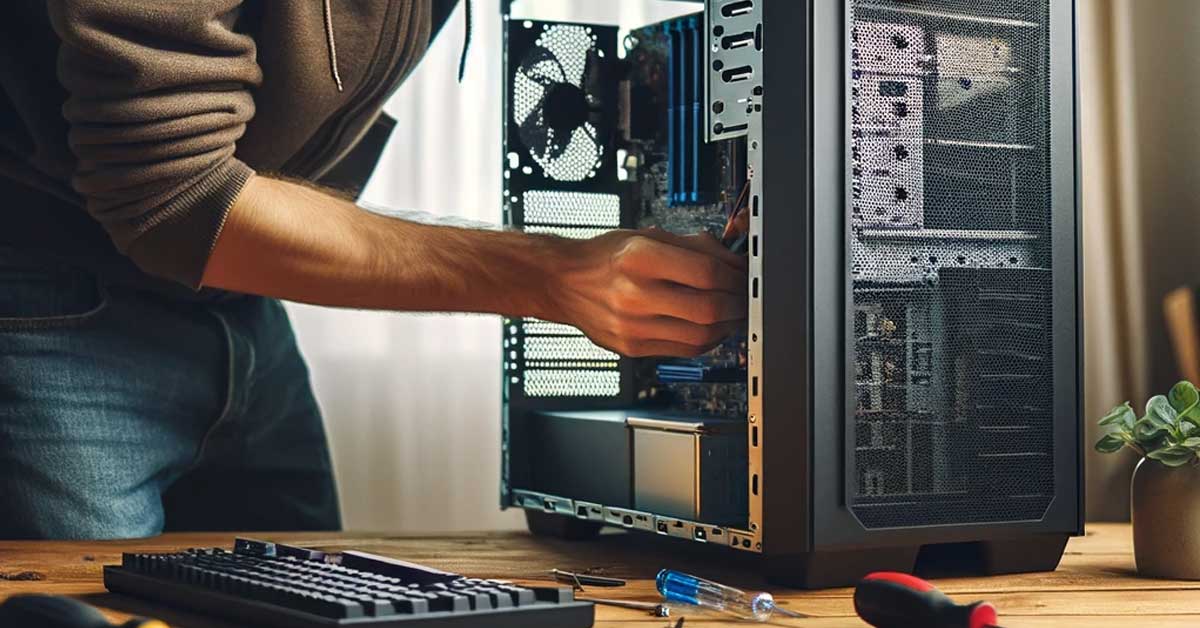Have you ever wondered why your computer’s PCIe x16 slot is operating at x8? This can be puzzling, especially if you’re expecting full performance from your hardware. Today, we’re here to demystify this issue and offer guidance. Let’s get right into it.
6 Reasons PCIe x16 is Running at x8:
1. Motherboard Design and Constraints
- Simple Explanation: Some motherboards are designed to split bandwidth between slots.
- Context: When you use multiple PCIe slots, the x16 bandwidth can be divided, causing each slot to run at x8. This design helps in accommodating more devices but can limit the speed of each slot.
- Example: On a motherboard with two PCIe x16 slots, if both are used, they might run at x8 each.
Motherboards are engineered with a finite amount of bandwidth for their PCIe slots, which are the interfaces for connecting various components like graphics cards and SSDs. Some motherboards have the capability to split this bandwidth among multiple slots, a feature designed to increase flexibility and expandability.
In the context of PCIe lanes, bandwidth refers to the data transfer capacity of the connections. A single PCIe x16 slot is capable of handling a larger bandwidth, providing higher data transfer speeds. This is particularly important for high-performance tasks like gaming or graphic-intensive applications.
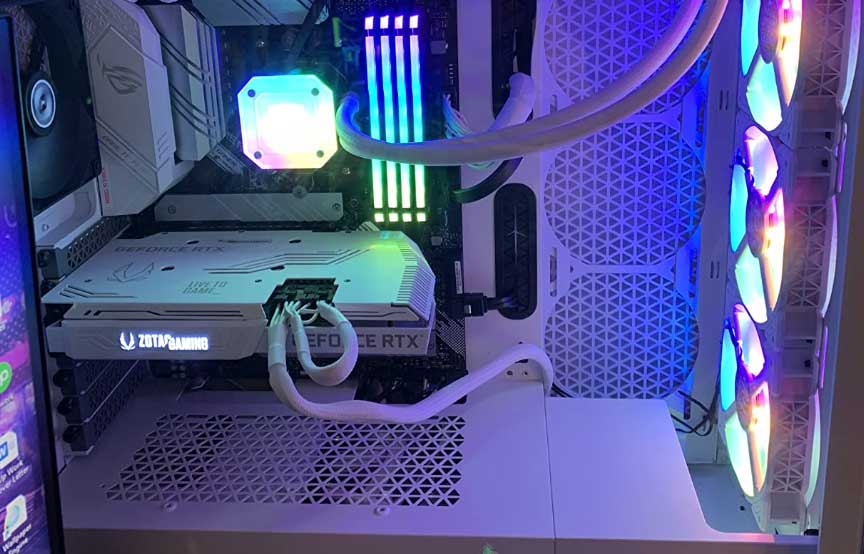
However, not all motherboards maintain x16 speeds when multiple PCIe slots are occupied. For instance, on a motherboard with two PCIe x16 slots, if only one slot is used, it can operate at the full x16 speed.
But when both slots are in use, the motherboard might split the bandwidth between them. As a result, each slot operates at x8 speed. This split is a trade-off between accommodating more PCIe cards and the maximum performance of each card.
This design choice reflects a balance between expandability and performance. While it allows more devices to be connected, it can limit the speed of high-performance cards that can benefit from the full x16 bandwidth.
2. CPU Lane Limitations
- Straight Talk: Your CPU might not have enough lanes.
- Why It Matters: CPUs have a fixed number of PCIe lanes. If the CPU can’t support enough lanes for a full x16 connection, the slot will operate at x8.
- Example: Intel’s Core i5-10400 has 16 PCIe lanes. If other devices are using these lanes, your x16 slot might get only 8 lanes.
When discussing the performance of PCIe slots, especially in terms of their bandwidth or speed capabilities, the CPU plays a pivotal role.
Each CPU is designed with a specific number of PCIe lanes. These lanes are like highways for data, connecting the CPU to various components of the computer such as the graphics card, SSDs, and network adapters.
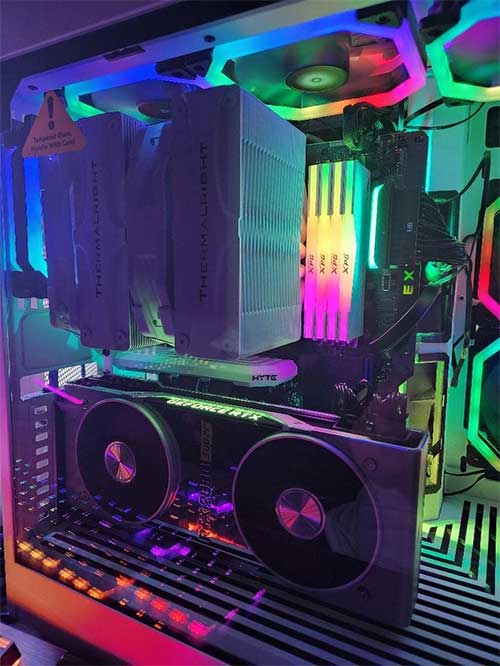
The number of available PCIe lanes in a CPU is a crucial factor because it sets a limit on how many devices can be connected directly to the CPU and how much data can be transferred simultaneously. If a CPU has a limited number of PCIe lanes, it cannot support multiple high-bandwidth connections simultaneously.
For example, consider Intel’s Core i5-10400 processor, which has 16 PCIe lanes. This number might seem sufficient for a single high-performance component like a graphics card, which ideally uses a x16 slot for maximum performance.
However, if other components are also connected to the CPU and utilize these lanes, the available lanes for each component can be reduced.
3. BIOS Settings
- In Plain Language: Your BIOS settings could be the culprit.
- Significance: Sometimes, the BIOS is set to run PCIe slots at lower speeds for compatibility or power-saving reasons.
- How to Check: Look into your BIOS settings to ensure the PCIe configuration is set to x16.
When troubleshooting why your computer’s PCIe slots aren’t operating at their full x16 speed, one often overlooked area is the BIOS settings.
BIOS, which stands for Basic Input/Output System, is like the rulebook your computer follows when it starts up. It manages data flow between the computer’s operating system and attached devices like the hard drive, video adapter, keyboard, mouse, and printer.
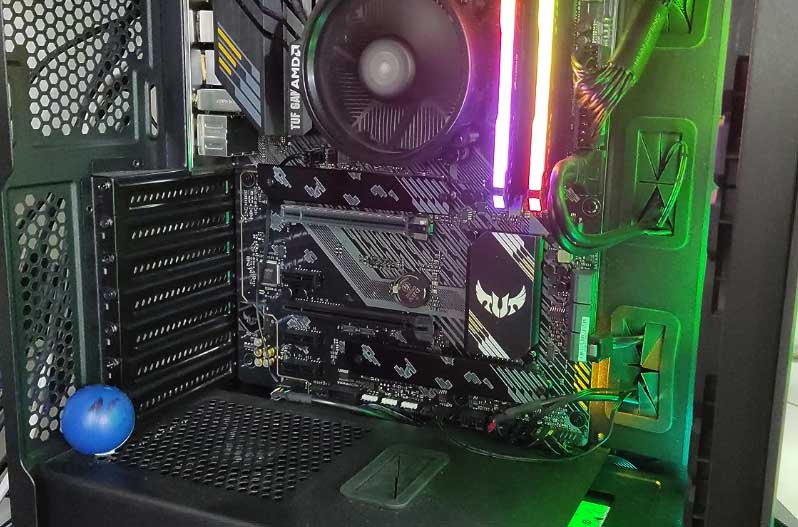
In some cases, the BIOS might be configured to run PCIe slots at lower speeds. This can be due to a variety of reasons, such as ensuring compatibility with older hardware or to reduce power consumption.
While these settings can be helpful in certain situations, they might inadvertently limit the performance of your PCIe-connected devices, especially newer ones designed to operate at higher speeds.
To check if this is the case, you’ll need to access your computer’s BIOS settings. This is typically done by pressing a specific key (like F2, F10, or DEL) immediately after turning on your computer.
Once in the BIOS menu, navigate to the PCIe settings. Here, you should find options to configure the operational mode of your PCIe slots. Ensure that these are set to x16 to allow for maximum data transfer speed.
Remember, each motherboard’s BIOS can look a bit different, so the exact steps might vary. If you’re unsure, consult your motherboard’s manual or look up a guide online for your specific model.
4. Faulty or Incompatible Hardware
- No Jargon Here: Broken parts can cause speed drops.
- What This Means: If your graphics card or motherboard has damage or isn’t fully compatible, it can default to x8 speed.
- Advice: Check for visible damage or consult your hardware’s compatibility list.
When your computer’s PCIe slot isn’t operating at the expected x16 speed, it might be due to faulty or incompatible hardware. This is similar to having a damaged gear in a machine, which can cause it to malfunction.
If your graphics card or motherboard has physical defects like bent pins, burnt circuits, or broken slots, or if they are not designed to work well together, it can lead to the system defaulting to a lower speed, like x8.
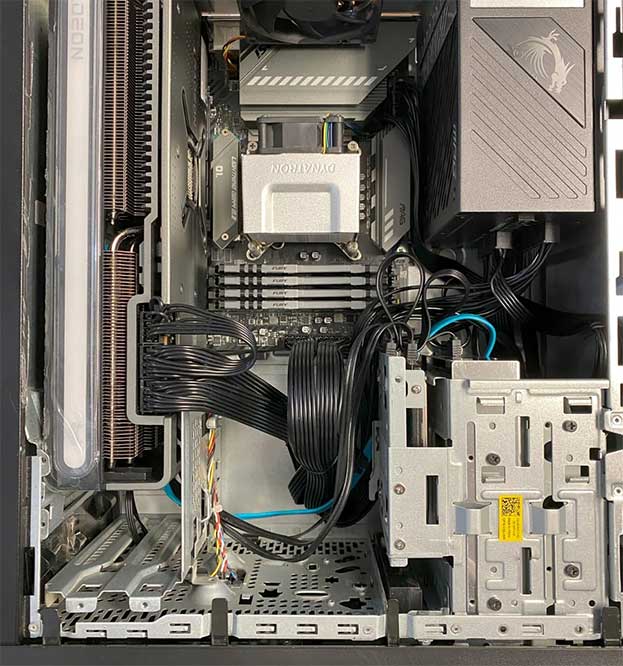
If you suspect broken or faulty parts, a good start is to visually inspect your graphics card and motherboard. Look for any signs of damage, such as physical defects or signs of burning. Also, if you’re using a PCIe riser cable, make sure it supports x16 speeds.
Sometimes, the issue might not be visible, so it’s also a good idea to check the compatibility of your components. Manufacturers often provide lists of compatible hardware, which can be a valuable resource to ensure that your graphics card and motherboard are a good match.
In cases where you find physical damage, replacing the affected component might be necessary. On the other hand, if you’re facing a compatibility issue, upgrading either your graphics card or motherboard to ensure better synchronization might be the best course of action. Addressing these hardware concerns can significantly improve your system’s performance, especially for data-intensive tasks.
5. Software or Driver Issues
- Plain English: Software problems can slow things down.
- Relevance: Outdated or corrupted drivers might cause the system to misread the PCIe slot’s capability.
- Solution: Update your motherboard and graphics card drivers regularly.
Software or driver issues are another common reason why your computer’s PCIe slot might not be functioning at its full x16 speed.
In simpler terms, just like a glitch in an app can cause your phone to slow down or behave unexpectedly, problems with the software that controls your computer’s hardware can lead to reduced performance.
The drivers in your computer act as translators between the hardware and the operating system. If these drivers are outdated or corrupted, they might not communicate effectively with the hardware. This can cause the system to misinterpret the capabilities of the PCIe slot.

For example, the system might only recognize a x16 slot as capable of x8 speed because the driver doesn’t convey the correct information.
To avoid such issues, it’s important to keep your drivers up to date. Regularly updating your motherboard and graphics card drivers ensures they can communicate accurately and efficiently with the rest of your system.
Manufacturers frequently release updates that not only fix bugs but also enhance the performance and compatibility of their hardware. Updating drivers is usually a straightforward process. You can often find the latest drivers on the manufacturer’s website or through your operating system’s update feature.
6. Physical Obstructions or Poor Seating
- To Put It Simply: If your card isn’t in right, it won’t run right.
- Importance: Dust, debris, or improper installation can cause the PCIe connection to be partially engaged, leading to reduced bandwidth.
- Tip: Ensure your card is firmly and correctly seated in the slot. Clean any dust or debris.
Physical obstructions or poor seating of your graphics card in the PCIe slot can significantly impact its performance. To put it simply, if your card isn’t inserted correctly or if there’s something blocking its connection, it won’t operate as intended.
Think of it like plugging in a USB device partially; it won’t function properly because the connection isn’t fully established. Similarly, if dust, debris, or even an incorrect installation of the graphics card occurs, it can prevent the PCIe connection from being fully engaged.
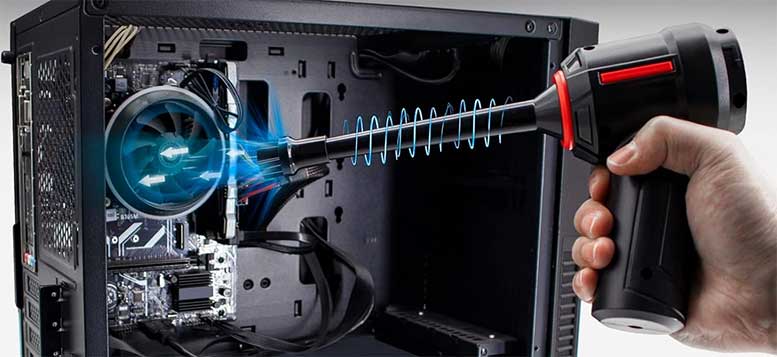
This partial connection can lead to reduced bandwidth, which means your graphics card won’t be able to communicate as efficiently with the rest of the PC. Instead of operating at the expected x16 speed, it might run at a lower speed, affecting the overall performance.
To tackle this issue, the first step is to ensure that your card is firmly and correctly seated in the PCIe slot. Turn off your computer and unplug it, then open the case to access the motherboard. Carefully remove the graphics card and reinsert it, making sure it clicks into place and is securely seated. This simple step can often resolve issues related to poor connection.
It’s also important to keep the interior of your PC clean. Dust and debris can accumulate over time, not just on the graphics card, but also within the PCIe slot itself. Use compressed air, keyboard vacuum or a soft brush to gently clean the slot and the card. This regular maintenance can prevent physical obstructions from impairing the connection and ensure optimal performance of your hardware.
Final Thoughts
When your PCIe x16 slot is running at x8, you might not get the performance you expect, especially in graphics-intensive tasks or gaming. However, for many applications, the difference between x8 and x16 speeds is minimal. It’s crucial to understand the reason behind this behavior to ensure your system is running optimally.
Keep these things in mind:
- Check Your Hardware and BIOS Settings: Make sure everything is compatible and correctly set up.
- Update Your Drivers: Keep your drivers up to date to avoid software-related issues.
- Consult Your Motherboard Manual: It can provide specific information about PCIe lane distribution.
In conclusion, there are several reasons why a PCIe x16 slot might be running at x8. From motherboard design, CPU limitations, BIOS settings, to physical and software issues, understanding these factors can help you troubleshoot and optimize your system’s performance. Remember, while it might seem like a big deal, in many cases, the impact on performance is minor. Stay informed and keep your system in top shape!
Meet Ry, “TechGuru,” a 36-year-old technology enthusiast with a deep passion for tech innovations. With extensive experience, he specializes in gaming hardware and software, and has expertise in gadgets, custom PCs, and audio.
Besides writing about tech and reviewing new products, he enjoys traveling, hiking, and photography. Committed to keeping up with the latest industry trends, he aims to guide readers in making informed tech decisions.

